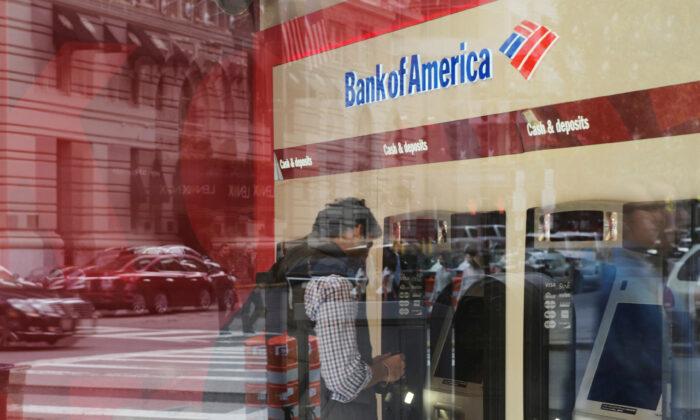A growing number of Americans are pulling money out of their 401(k) accounts because of financial hardship, new research from Bank of America (BofA) has revealed.
In the April–June period, 15,950 individuals completed a hardship withdrawal from their investment account, according to the financial institution’s second-quarter Participant Pulse report, an analysis of customers’ employee benefits programs that include more than 4 million individuals.
That’s up 12 percent from the first quarter and 36 percent from the year-earlier period.
Individuals who borrowed from their workplace plan in the previous quarter totaled 2.5 percent, up 1.9 percent from the first quarter. They were led by Generation Z (22.8 percent) and millennials (14.5 percent). Average loans dipped nearly 2 percent year over year to $8,550. Moreover, close to 14 percent of participants had at least one loan in default in the second quarter, down from 14.3 percent in the January-to-March period.
The BofA study discovered that the average quarterly contribution rate was unchanged at 6.5 percent. The typical contribution totaled $1,460, down 23 percent from the first quarter and roughly in line with last year’s average. Contributions were led by Generation Z (19.3 percent), millennials (11 percent), Generation X (9.7 percent), and baby boomers (7.8 percent).
The generational trend makes sense, too, considering that Generation Z workers are frightened that they will be unable to afford retirement.
According to BlackRock’s 2023 Read on Retirement report, 31 percent of the youngest generation of workers don’t believe they will save enough to retire.
A recent Credit Karma survey discovered that 36 percent of GenZers expect to retire by 50, and 66 percent plan to retire by 60. However, three-quarters of so-called Zoomers don’t have a 401(k) retirement account, and half still need a savings account. This is comparable to a recent Bankrate survey that found 31 percent of Generation Z workers have saved nothing for retirement.
“It’s interesting how bullish Gen Z is about their retirement plans, especially since so many have entered the workforce for the first time during an unfavorable economic environment, making it difficult for them to save money,” Courtney Alev, consumer financial advocate at Credit Karma, said in a statement.
Overall, BofA stated that the average 401(k) account balance was $82,300 in June, up nearly 10 percent from the end of 2022 balance of $75,050.
“The data from our report tells two stories—one of balance growth, optimism from younger employees and maintaining contributions, contrasted with a trend of increased plan withdrawals,” Lorna Sabbia, head of retirement and personal wealth solutions at Bank of America, said in a statement. “This year, more employees are understandably prioritizing short-term expenses over long-term saving. However, it’s critical that employees continue to invest in life’s biggest expense: retirement.”
A Tale of 2 Economies
A treasure trove of data in recent months has painted a mixed portrait of the U.S. economy.The labor market remains extremely tight. The July jobs figures confirmed an unemployment rate of 3.5 percent, annualized average hourly earnings of 4.4 percent, and job openings far above pre-pandemic levels. Real (inflation-adjusted) wage growth turned positive in July for the first time in 27 months, rising 0.2 percent.
Consumer spending, which represents two-thirds of the U.S. economy, continues to be robust. Retail sales rose 0.7 percent in July, up from 0.3 percent in June. Retail trade also topped the consensus estimate of 0.4 percent.

At the same time, the 16 percent cumulative increase in inflation and the 3 percent drop in nominal wages since 2021 have been taking a toll on household finances.
New data from the Federal Reserve Bank of New York found that total household debt surged to $17.06 trillion in the second quarter. Since the end of 2019, overall household debt has skyrocketed by nearly $3 trillion. In addition, the regional central bank’s quarterly report found that credit card debt topped $1 trillion for the first time ever.
The flow into serious delinquency for credit card debt climbed to 5.08 percent in the second quarter, up from 3.35 percent in the second quarter of 2022.
According to the New York Fed’s July Survey of Consumer Expectations, 40 percent of U.S. households said they are financially worse off than a year ago. One-quarter believe they will be financially worse off a year from now, 44 percent think they will be about the same, and about 30 percent say they will be better off.
A LendingClub report stated that 57 percent of consumers were living paycheck to paycheck in May, down from 61 percent in April.
Many reports have also showcased improving consumer inflation expectations.
The University of Michigan’s year-ahead inflation expectations eased to 3.3 percent in August, down from 3.4 percent in July.
As for household projections regarding the U.S. financial markets, 37 percent anticipate higher stock prices, which is still below the New York Fed’s decade-old trend.







